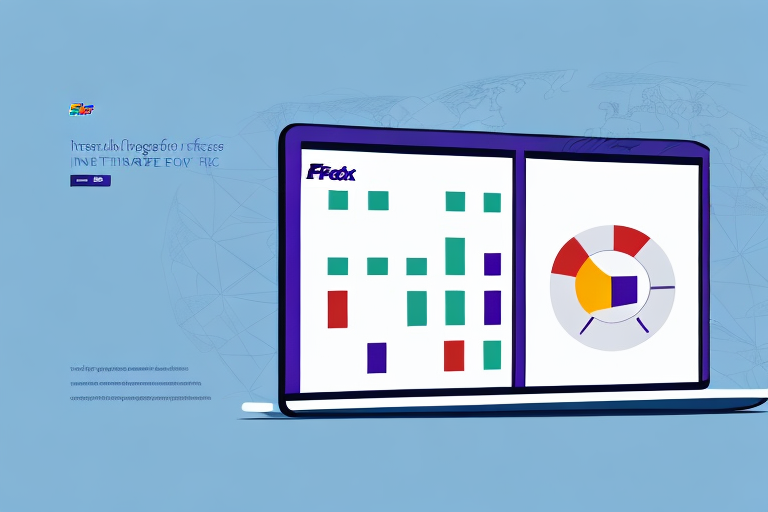Understanding FedEx Internal Shipping Rates with a Comprehensive Chart
For businesses that rely on shipping, comprehending how to calculate FedEx internal shipping rates is crucial. Understanding the various rate types, the factors influencing these rates, and strategies to negotiate better rates can lead to substantial savings and increased profitability. This article delves into calculating FedEx internal shipping rates, the importance of this understanding, and how to utilize a comprehensive chart to secure the best rates for your business needs.
How to Calculate FedEx Internal Shipping Rates: A Step-by-Step Guide
Calculating FedEx internal shipping rates involves three key components: the weight of your package, the distance it travels, and the required delivery speed. FedEx determines rates based on either the dimensional weight or the actual weight of the package, whichever is greater. Follow these steps to calculate your internal shipping rate:
- Weigh your package and determine its dimensional weight using FedEx's dimensional weight calculator.
- Calculate the distance your package will travel using the FedEx distance calculator or consider the zones defined by FedEx.
- Select the delivery speed you require, such as Ground, Express, or International shipping.
- Refer to the FedEx rate chart to find the corresponding shipping cost based on the above factors.
FedEx offers a variety of shipping options, each with its own rates and delivery times:
- Ground Shipping: The most cost-effective method, suitable for non-urgent deliveries.
- Express Shipping: Higher cost but ensures faster delivery times, ideal for urgent shipments.
- International Shipping: Rates vary based on the destination country and package weight.
Businesses that ship frequently can benefit from FedEx's discount programs. Enrolling in the FedEx Advantage Program offers discounts based on shipment volume, along with additional perks like free shipping supplies and simplified billing.
Why Understanding Internal Shipping Rates is Important for Your Business
Grasping internal shipping rates enables businesses to save money and boost profitability. By understanding the different rates and the factors influencing them, businesses can make informed decisions about their shipping strategies, aligning options with budgetary constraints. Neglecting this understanding can result in unexpected costs that erode profit margins.
Key considerations include:
- Distance: Shipping rates fluctuate significantly based on the distance between the origin and destination. Properly factoring in distance can help in budgeting and selecting the most cost-effective shipping options.
- Package Weight and Size: Heavier and larger packages typically incur higher shipping fees. Optimizing package size and weight can lead to cost reductions.
Moreover, a thorough understanding of shipping rates empowers businesses to negotiate better terms with shipping carriers. Armed with knowledge about rate structures and influencing factors, businesses can negotiate discounts that align with their shipping volumes and requirements, yielding significant long-term savings.
How to Save Money on FedEx Internal Shipping Rates: Tips and Tricks
Implementing strategic practices can help businesses reduce FedEx internal shipping costs:
- Standardize Package Dimensions: Ensuring packages meet FedEx's standard dimensions can minimize charges related to dimensional weight.
- Enroll in a FedEx Account: Businesses with high shipping volumes can access discounted rates by maintaining a FedEx account.
- Leverage FedEx SmartPost: Ideal for lightweight packages, SmartPost offers a cost-effective solution for frequent shippers.
- Use Flat-Rate Packaging: FedEx's flat-rate boxes can help manage shipping costs, especially for heavy items.
- Compare Carriers: Regularly comparing rates from different shipping providers ensures you are getting the most competitive prices for your specific needs.
According to the Brightpearl State of Shipping Insights 2023, businesses that actively manage and optimize their shipping strategies can reduce costs by up to 20% annually.
The Different Factors That Affect Internal Shipping Rates at FedEx
Several factors influence FedEx internal shipping rates:
- Package Weight and Size: Larger and heavier packages cost more to ship due to increased handling and fuel consumption.
- Shipping Distance: The longer the distance, the higher the rate, as it involves more transit resources.
- Shipping Speed: Faster delivery options, such as overnight or two-day shipping, demand higher rates.
- Package Type: Special items like hazardous materials or fragile goods require additional handling, raising the cost.
- Destination: Shipping to remote or hard-to-reach locations may incur extra fees.
Understanding these factors allows businesses to strategize their shipping methods effectively, ensuring cost-efficiency while meeting delivery requirements.
Comparing FedEx Internal Shipping Rates with Competitors: Which One is Best for You?
Choosing the right shipping provider involves comparing rates and services to match your business needs:
- FedEx: Known for its extensive network and reliable delivery options, FedEx offers same-day, next-day, and two-day deliveries. While their rates may be higher, the reliability and speed can be worth the investment for businesses that prioritize timely deliveries.
- UPS: Often comparable to FedEx in terms of reliability, UPS may offer more competitive rates for certain shipping volumes and destinations.
- DHL: Excelling in international shipping, DHL provides extensive global coverage, which can be advantageous for businesses with an international customer base.
According to the Forbes Tech Council, businesses should consider factors such as delivery speed, reliability, customer service, and pricing structures when selecting a shipping provider. Evaluating these aspects ensures that the chosen carrier aligns with your business objectives and customer expectations.
How to Negotiate Better Internal Shipping Rates with FedEx
Businesses with substantial shipping volumes have opportunities to negotiate more favorable rates with FedEx:
- Volume-Based Discounts: Discuss shipment volumes with your FedEx account representative to unlock tiered discounts based on your shipping frequency and volume.
- Exclusive Shipping Agreements: Committing to use FedEx exclusively for all your shipping needs can provide leverage in negotiating lower rates.
- Utilize Online Shipping Tools: Tools like FedEx Ship Manager streamline the shipping process and offer additional discounts for online tool usage.
According to Business News Daily, proactive negotiation and leveraging available tools can lead to savings of up to 15% on shipping costs.
Understanding the Different Types of FedEx Internal Shipping Rates for Your Business Needs
FedEx offers various internal shipping rate structures tailored to different business needs:
- Retail Rates: The highest standard rates available to individual customers without any negotiated discounts.
- List Rates: Standard rates offered to businesses without a specialized account. These rates are generally higher than account rates but lower than retail rates.
- Account Rates: Customized rates for businesses with negotiated agreements based on shipping volume and frequency. These rates are typically the most competitive.
Understanding the distinctions between these rate types enables businesses to select the most cost-effective option based on their shipping patterns. High-volume shippers should prioritize securing account rates to maximize savings.
How to Use the Comprehensive Chart to Find the Best FedEx Internal Shipping Rates for You
A comprehensive FedEx rate chart is an invaluable tool for businesses seeking the most cost-effective shipping options. Here's how to utilize it effectively:
- Analyze Package Specifications: Input your package's weight, dimensions, and destination into the chart to identify applicable rates.
- Compare Shipping Options: Evaluate different shipping speeds and services to determine which balance cost and delivery time best for your needs.
- Account for Additional Fees: While the chart provides base rates, be mindful of potential extra charges such as fuel surcharges, residential delivery fees, and special handling fees.
For the most accurate pricing, always confirm rates directly with FedEx or your account representative, as promotional rates and discount structures may apply.
Furthermore, businesses can enhance savings by utilizing FedEx's online tools and enrolling in discount programs. According to the ShipScience article on FedEx Discounts, utilizing online shipping platforms can lead to savings of up to 16% on shipping costs.
Common Mistakes to Avoid When Calculating or Using FedEx Internal Shipping Rates
Avoiding common errors in calculating or utilizing FedEx internal shipping rates can lead to significant cost savings:
- Ignoring Dimensional Weight: Failing to account for dimensional weight can result in unexpectedly high shipping costs.
- Choosing Inappropriate Delivery Speeds: Selecting a faster delivery option than necessary increases shipping expenses unnecessarily.
- Paying Retail Rates: Not negotiating or securing account rates can lead to paying higher-than-necessary shipping fees.
- Overlooking Discounts and Promotions: Missing out on available discounts and promotional offers can result in higher shipping costs.
- Neglecting Regular Data Analysis: Failing to regularly review shipping data prevents businesses from identifying cost-saving opportunities and optimizing their shipping strategies.
By avoiding these mistakes, businesses can enhance the cost-effectiveness of their shipping operations, leading to improved profitability.
In summary, understanding and strategically managing FedEx internal shipping rates is essential for businesses that rely on shipping for their operations. Utilizing comprehensive rate charts, negotiating favorable terms, and avoiding common pitfalls can lead to significant cost savings and increased business profitability.
For more detailed insights and updates on shipping strategies, visit ShipScience.






















